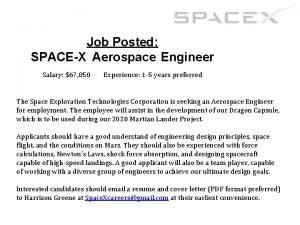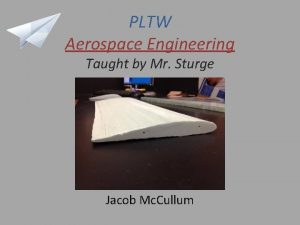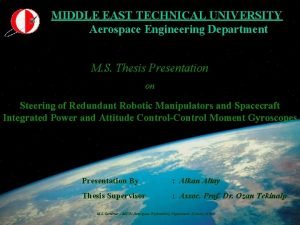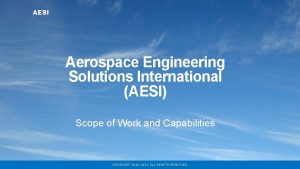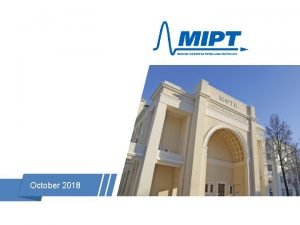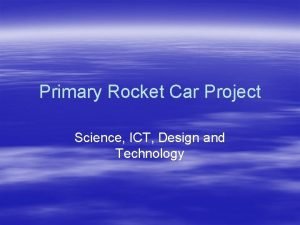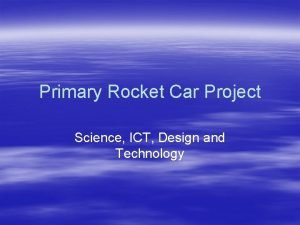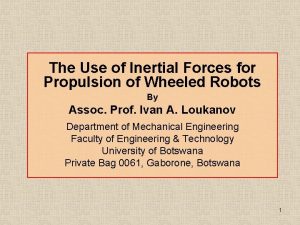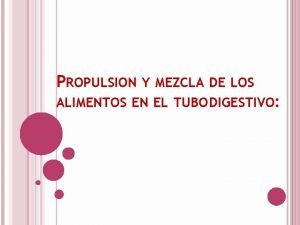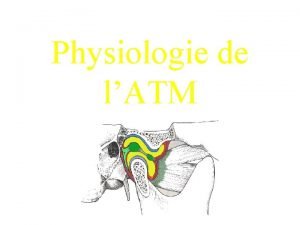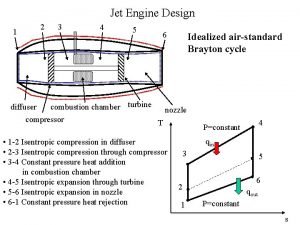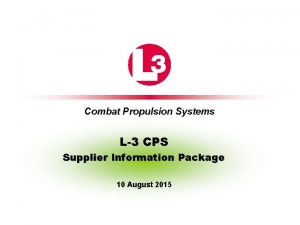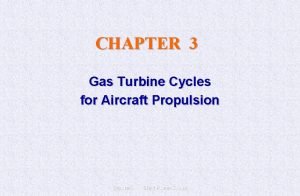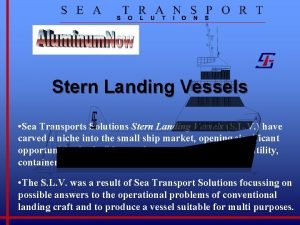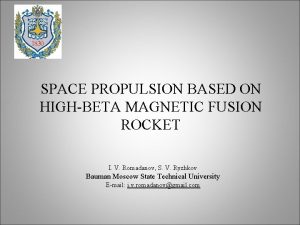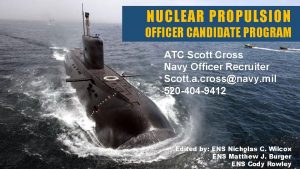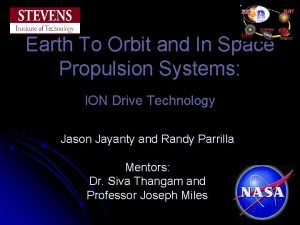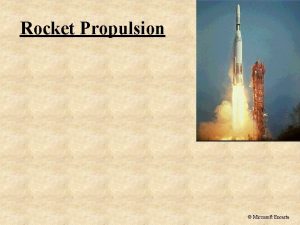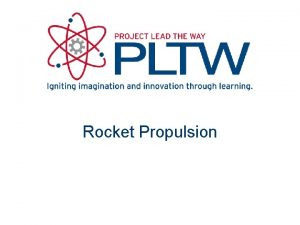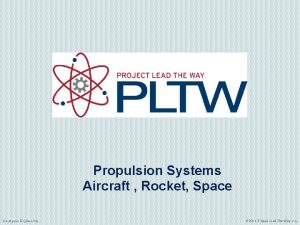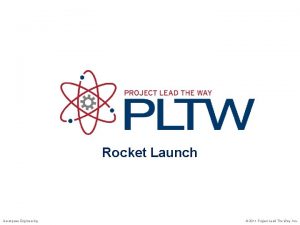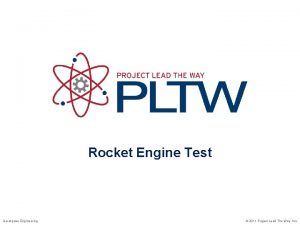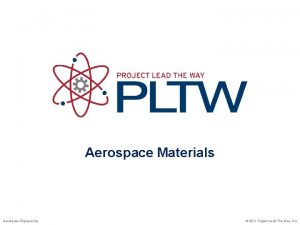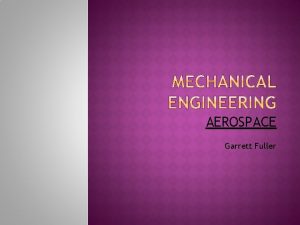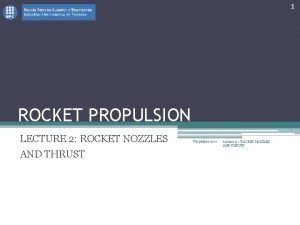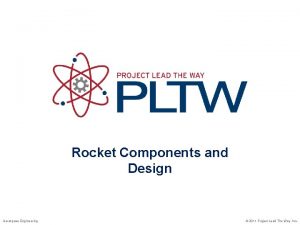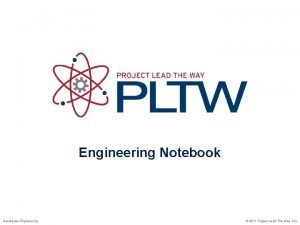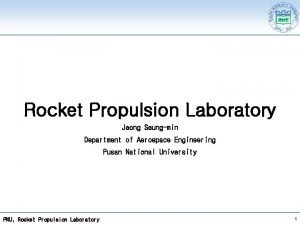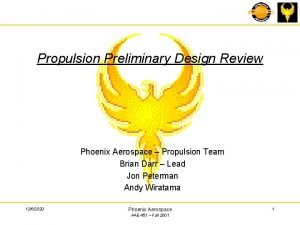Rocket Propulsion Aerospace Engineering 2011 Project Lead The
















- Slides: 16

Rocket Propulsion Aerospace Engineering © 2011 Project Lead The Way, Inc.

Types of Propulsion Systems All propulsion systems are driven by an engine 1. 2. 3. 4. Propeller Turbine (also called jet) Ramjet and Scramjet Rocket

Rocket Propulsion • Produces thrust by ejecting stored matter • Rockets can be classified by propulsion – Liquid – Solid – Electric • Other classifications – Expendable or reusable – Number of stages – Size of payload – Manned or unmanned

Liquid Fuel Rocket • Fuel mixed with oxidizer and burned • Gases escape out nozzle to generate thrust

Solid Fuel Rocket • Fuel burned to generate gases • Gases escape out nozzle to generate thrust

Thrust Equation Derivation

Thrust Equation Derivation

Impulse Equation Derivation

Use of Impulse Equation Thrust force is a function of time. This means you find the total area under the thrust vs. time curve to determine the total impulse. Area = Impulse (Ns) Thrust (N) Plotting the thrust as a function of time, you can integrate the values to find the area under the curve. Logger. Pro has an integrate function. time(s)

Model Rocket Flight Stages

Model Rocket Engine Design

Model Rocket Engine Nomenclature Total Impulse Code Delay Time (Newton-Seconds) (Seconds) B 6 -4 Average Thrust (Newtons)

Model Rocket Engine Performance

Model Rocket Engine Performance

References National Aeronautics and Space Administration (2010). Retrieved from http: //www. grc. nasa. gov/WWW/K 12/airplane/topics. htm National Aeronautics and Space Administration (2010). Retrieved from http: //www. nasa. gov/worldbook/rocket_worldbook. html Lockheed Martin (2010). Retrieved from http: //www. flickr. com/photos/lockheedmartin Reproduction Masters for Model Rocketry, Estes (2010). Retrieved from http: //www. estesrockets. com/index. php/site/esteseducator/

References Sutton, G, & Biblarz, O. (2001). Rocket propulsion elements: An introduction to the engineering of rockets. New York, NY: John Wiley & Sons, Inc.
 Nasa biologist salary
Nasa biologist salary Pltw aerospace engineering
Pltw aerospace engineering Metu aerospace engineering
Metu aerospace engineering Aerospace engineering solutions
Aerospace engineering solutions Mipt aerospace engineering
Mipt aerospace engineering Rocket car project
Rocket car project Rocket car project
Rocket car project Inertial propulsion drive
Inertial propulsion drive Propulsión en el sistema digestivo
Propulsión en el sistema digestivo Paris stylo enchanted
Paris stylo enchanted Jet engine diffuser
Jet engine diffuser L-3 combat propulsion systems
L-3 combat propulsion systems Turbojet vs turbofan
Turbojet vs turbofan Stern landing vessel propulsion
Stern landing vessel propulsion Vasimr
Vasimr Nuclear propulsion officer salary
Nuclear propulsion officer salary Siva de scalzo
Siva de scalzo
